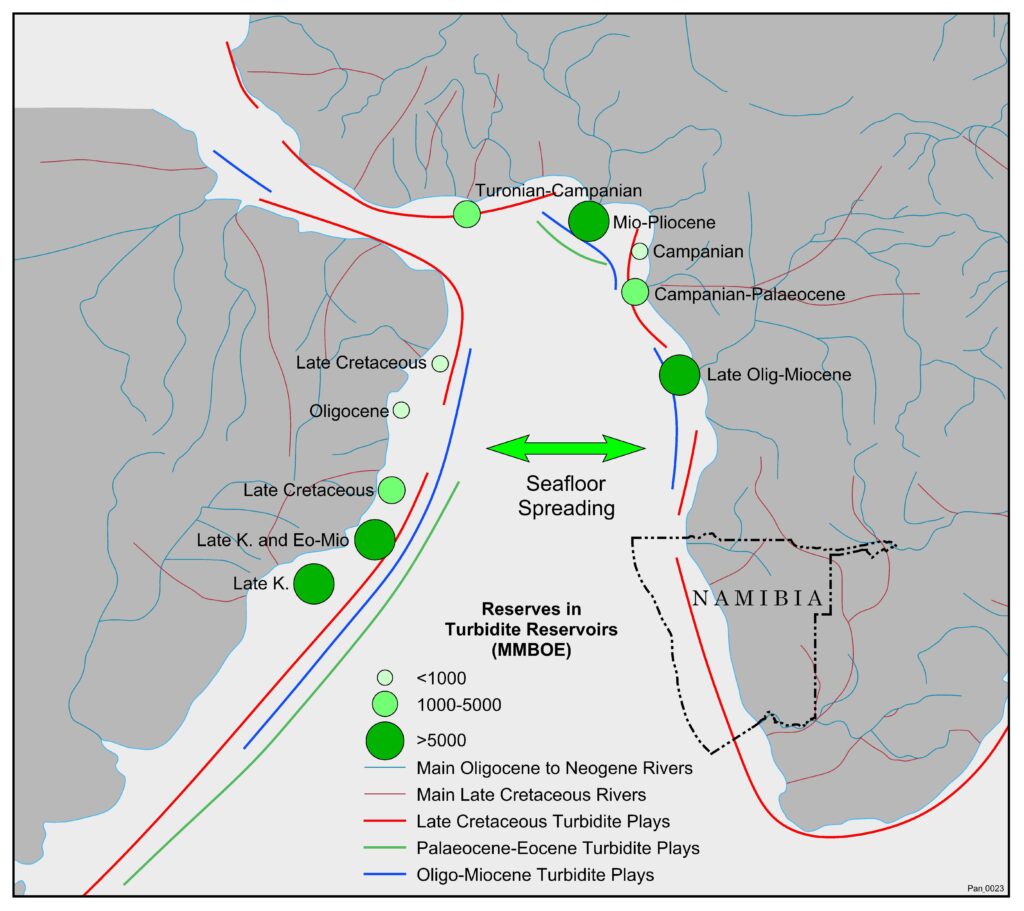
Orange Basin PEL 87
Namibian Orange Basin
The Namibian Orange Basin, located off the coast of southern Namibia, has emerged as a global exploration hot spot region for hydrocarbon exploration due to a number of favourable geological conditions.
Geological Setting
The Orange Basin is part of the broader South Atlantic margin, which formed during the rifting and breakup of Gondwanaland in the Late Jurassic and Early Cretaceous. This rift history resulted in the deposition of thick sedimentary sequences of predominantly deep marine origin, creating ideal conditions for hydrocarbon generation and accumulation. The Namibian Orange Basin hosts a highly effective petroleum system with abundant mature source rocks, high-quality reservoirs, effective seals, and efficient migration pathways. The combination of structural and stratigraphic traps provides ideal conditions for hydrocarbon accumulation, enhancing the overall prospectivity of the basin for oil and gas exploration.

Source Rocks
Organic-rich marine shales, particularly from the Aptian to Albian (Cretaceous) period, serve as the primary source rocks within the basin. These rocks are rich in kerogenand have undergone sufficient burial to reach thermal maturity across large areas of the basin, generating vast quantities of both oil and gas.
Reservoir Rocks
Proven reservoir formations are clastic by nature and are predominantly turbidite-related sandstones and deep marine fan systems deposited during the Cretaceous period. These sandstones have excellent porosity and permeability, making them ideal for the entrapment and production of hydrocarbons.
Seals
Sealing formations within the basin are typically thick shales or claystones that were deposited in deep marine environments. Thick shale layers across the basin provide excellent vertical and lateral sealing capacity, making them highly effective in maintaining hydrocarbon accumulations.
Traps
Structural Traps are formed due to faulting, folding, and the creation of structural highs associated with rifting and tectonic movements during the opening of the South Atlantic margin. In addition to structural traps, stratigraphic traps such as pinch-outs and channel sand terminations are present due to changes in the depositional environments over time.A number of discoveries within the basin are a result of combined structural and stratigraphic features, enhancing trapping efficiency.
Migration Pathways
The migration of hydrocarbons from source rocks to reservoir formations occurs along faults, fractures, and through permeable sediment layers. The basin’s rift and post-rift tectonic history has created migration pathways that allow hydrocarbons to move upward to accumulate in large traps.Hydrocarbon generation and migration are known to have occurred mostly after trap formation, ensuring that hydrocarbons are effectively trapped in reservoirs.
Overburden Rocks
Overburden rocks include the sediments deposited above the hydrocarbon-bearing layers. These rocks play a crucial role in creating the pressure and thermal conditions necessary for source rock maturation and hydrocarbon migration.